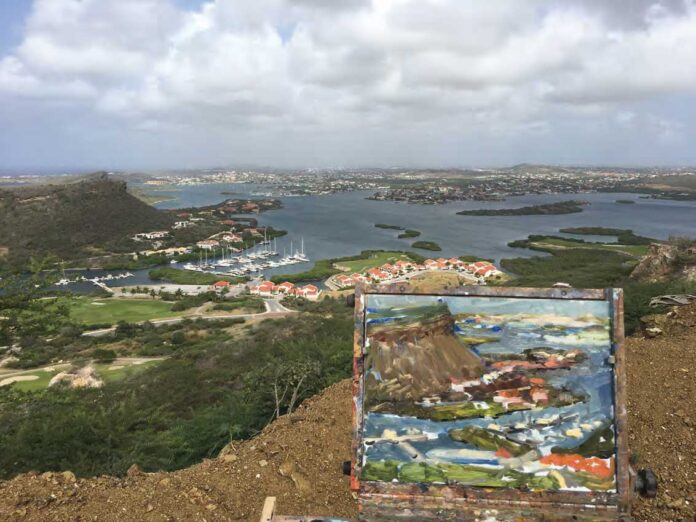
Preview the newest issue of PleinAir Magazine with the Editor’s Letter:
The What and Why of Plein Air Painting
As I write this note, I’m thinking about a highlight from the Plein Air Live program: my conversation with three living legends, Matt Smith, Skip Whitcomb, and Bill Anton. As attendees of the 4th annual event can attest, the trio’s passion for plein air painting was palpable, as was their deep friendship and appreciation of one another’s work.
I took down many inspiring quotes and pieces of wisdom shared by these landscape painting icons, but the one that has driven me to my laptop this morning came as we discussed the booming interest in painting outdoors. “Some people refer to plein air painting as a style,” Anton said. “It’s not a style, it’s a discipline.”
For each of these contemporary masters, that discipline has looked different at various points in their careers. It may have been simply a tool to better understand how light affects the landscape and find ways to problem-solve back in the studio, an approach for creating works good enough to frame and sell, or ultimately a way to more deeply inform studio work. For Whitcomb, who says he started his landscape painting career selling works out of his paint box, “those studies are much more valuable to me now as reference in the studio.”
In the magazine, we celebrate and promote all of those approaches, and more. In this issue, you’ll see the color and gestural information featured artist Heather Arenas gathers in her plein air figure studies and how those studies relate to her studio paintings of museum-goers as they interact with the work on the walls. In the stories about Shanna Kunz and Tony Allain, you can compare the level of finish and detail the artists strive for in their studio pieces versus the work they complete en plein air.

“Bridging that gap from working outdoors to working in the studio on larger pieces is like trying to build a bridge across the Grand Canyon for most of us,” Whitcomb said during our conversation for Plein Air Live, “but learning to do so has made all the difference.”
In the article “Beyond Plein Air,” Christine Lashley addresses exactly this issue, taking us through her solutions to the problems that arise when we try to translate plein air studies into larger studio paintings. Topics she covers include how extra room on the canvas may influence our decisions when it comes to scale and ratio; how to retain the feeling of vitality and momentum in our studio work; and how to avoid strident color, awkward shapes, and superfluous detail, common pitfalls when working large.
Smith and the other living legends see the reinvigoration of the plein air painting discipline in recent decades as a good thing for the art world. “The more people that come to art, know what it is and how we go about doing it, the better for everyone,” Smith said. “I’m out painting all the time and I’ll get people walking up to me on the trail, curious about what I’m doing, and my hope is always that they’ll go on and Google plein air painting or landscape painting and study it even more.”
For those already plein air painting, he recommends “looking to art history books for inspiration; going outdoors to paint is nothing new.” Then it’s about working hard. Just be patient, he warns. “When I got my first French easel and went outdoors, I spent five years painting full time on location before I got a painting that I thought, ‘OK, whoa, what happened there? That worked!’ The next year, I probably got three paintings that worked, and then it started to build on itself. When you’re getting started, it’s important to know the tools of your trade, what you’re doing and why you’re doing it, and to balance that with what’s happening back in the studio.”
Whether you’re a curious bystander, collector, or committed landscape painter, I hope the stories in this issue give you plenty to think about in terms of defining what plein air painting means to you, why the artists you admire do what they do, and why it may make sense for you, too.
Helpful Links:



